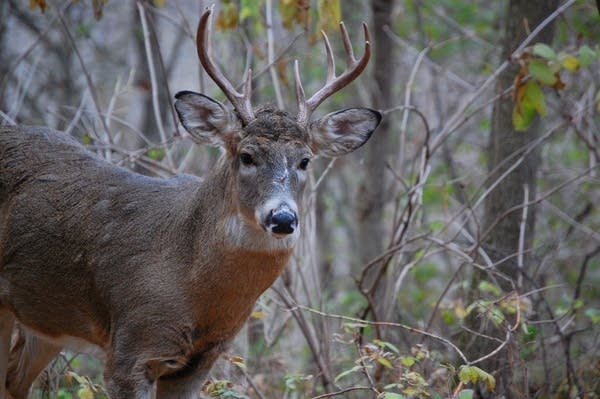Chronic wasting disease could spread faster than expected

Go Deeper.
Create an account or log in to save stories.
Like this?
Thanks for liking this story! We have added it to a list of your favorite stories.
Back in March, field biologists caught and collared 109 deer. They've been tracking them ever since, trying to get a sense of where and how quickly chronic wasting disease could spread.
The findings are still preliminary at this point, but so far, head researcher Christopher Jennelle said slowing the spread of the disease might be more complicated than biologists thought.
"One of our female animals has traveled approximately 80 miles," he said. "That really blew our minds."
Since the fall of 2016, 17 cases of chronic wasting disease have been found in the wild deer population of southeastern Minnesota. There's no cure and no vaccine, although teams of scientists are working on it. Right now, CWD is 100 percent fatal.
Turn Up Your Support
MPR News helps you turn down the noise and build shared understanding. Turn up your support for this public resource and keep trusted journalism accessible to all.
The disease has spread rapidly in other states. In parts of Wisconsin, an estimated 40 to 50 percent of deer are infected. And that happened in a very short time. In 1999, the first year the Wisconsin DNR began monitoring the disease, just 3 animals tested positive. By 2017, that number had climbed to 600.
If the same thing happens in Minnesota's deer herds, the effects could be dramatic.
The point of this study is to understand how infected deer could potentially move on the landscape.
"When deer reach the first year of life," Jennelle said, "they have to make a decision. Whether they want to remain in their birth range, or if they want to disperse from it, and establish a new adult range, elsewhere."
He hoped that since southeastern Minnesota is such a lush habitat for deer, they wouldn't feel the need to spread out, thus isolating the disease in one, more easily managed location.
But that doesn't seem to be the case. More young deer than expected choose to disperse, and they're dispersing farther. Jennelle brought up one young doe that walked all the way from Forestville State Park, to Cannon Falls, at least 77 miles.
Most deer didn't go that far, but they did go farther than researchers hoped.
"What does that mean for CWD?" he said. "Well, it doesn't bode well. I'll put it that way."
Another surprise, Jennelle said, is which deer are traveling. Up until this point, efforts to slow the disease tended to focus on mature bucks, which are the most likely carriers of CWD.
"We totally expected our juvenile males to be our movers and shakers here," he said.
But in this study, does on average traveled twice as far as bucks. So if one is infected, it could spread the disease over a much larger range.
Jennelle pointed out that the sample sizes are still too small to draw sweeping conclusions. And there are a lot of things researchers still don't know about CWD. Infected deer might behave differently than the healthy ones in Jennelle's study. They could, he said, feel sick and rundown, and decide to stay in their birth range.
The study will provide better data over the next few years.


